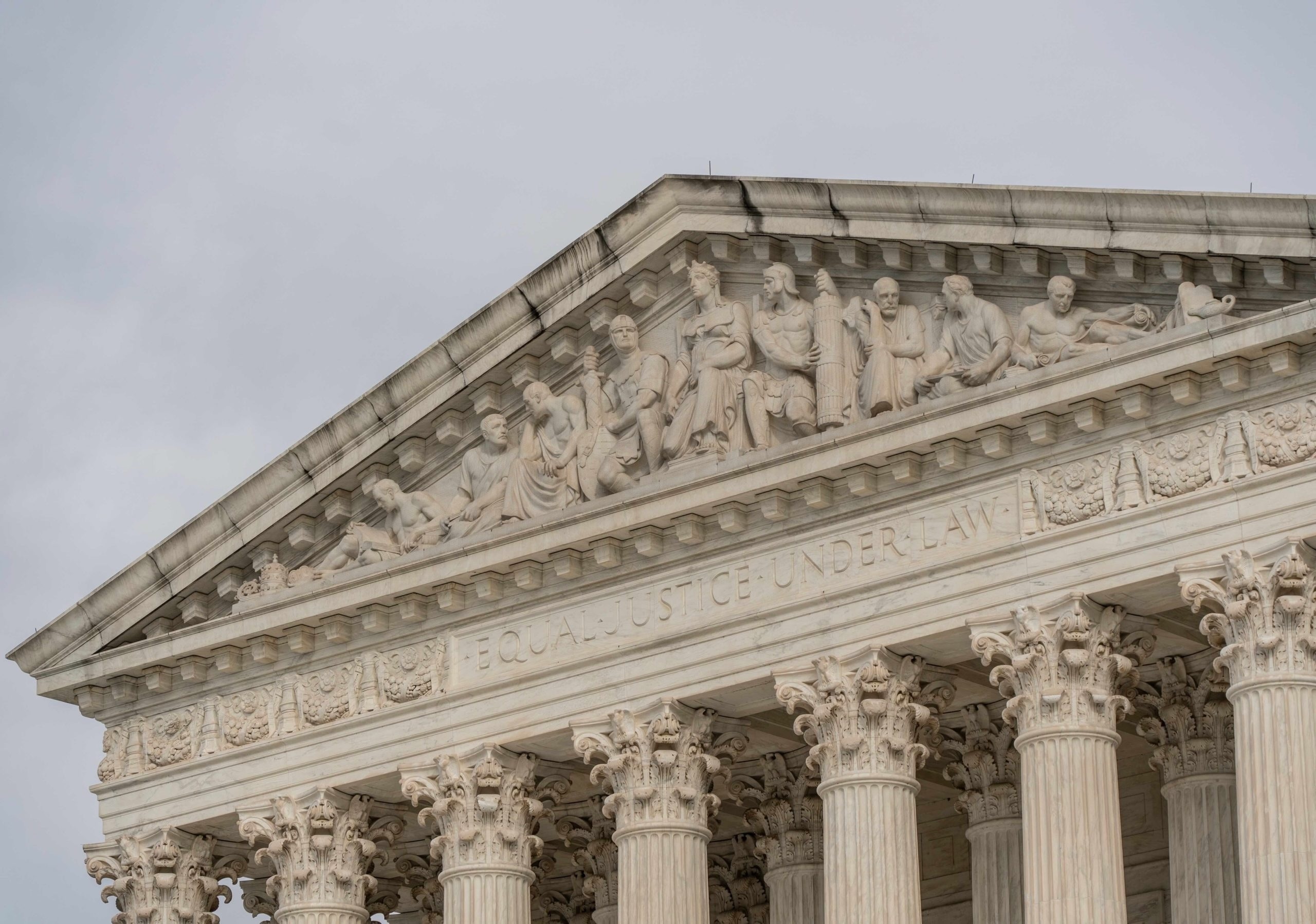Effort to block second majority-Black district in Louisiana comes to Supreme Court


In 2022, the Louisiana legislature adopted a congressional map that included only one majority-Black district among the six allotted to the state, though a third of the state’s population is Black. The map was challenged in federal court as a dilution of the votes of Black residents and in 2024 the legislature drew another map, this time with two majority-Black districts.
On Monday, the Supreme Court will take up the latest stage in the struggle over Louisiana’s congressional map. Defending the map, the state contends that it was effectively caught between a rock and a hard place as it tried to adhere to both the federal Voting Rights Act and the Constitution. But the voters challenging the new map counter that Louisiana never intended to comply with the Voting Rights Act, and they urge the justices to rule that the new map was an unconstitutional racial gerrymander – that is, it sorted voters based primarily on their race.
The federal district court that threw out the 2022 map ruled that it likely violated Section 2 of the Voting Rights Act, which bars election practices that result in a denial or abridgement of the right to vote based on race. The court blocked the state from using the map for congressional elections, and it ordered the state to draw a new plan that would include a second majority-Black district.
The U.S. Court of Appeals for the 5th Circuit upheld the district court’s conclusions and directed the state to adopt a new map by Jan. 15, 2024. If the state did not do so by then, the court of appeals indicated, then the district court would hold a trial and, if needed, adopt a map for the 2024 elections.
The Louisiana legislature went back to the drawing board and enacted a new map, known as S.B. 8. It created a second majority-Black district that begins in the northwest corner of the state near Shreveport and stretches 250 miles southeast toward Baton Rouge.
That prompted another challenge, this time from a group of voters who describe themselves as “non-African American.” They filed a new lawsuit arguing that S.B. 8 was an unconstitutional racial gerrymander. A three-judge federal district court agreed with them and prohibited the state from using it in future elections.
In May 2024, a divided Supreme Court paused the district court’s decision, clearing the way for the state to use S.B. 8 in the 2024 election. Cleo Fields, a state senator who had represented a majority-Black district in Congress for two terms during the 1990s until he was forced out by redistricting, was elected to represent the newly drawn district.
The state and the voters who had challenged the 2022 map appealed to the Supreme Court in July, and the justices in November set the case for oral argument.
In its brief at the Supreme Court, Louisiana argues that the “divvying up of Americans by race is a stain on our Nation’s history” that “should be a disgraced relic of the past.” But the Supreme Court’s voting rights cases, it contends, compel states “to continue that vile practice today — penalizing States both when they consider race too little and when they consider race too much.”
But the Supreme Court, Louisiana says, should not even reach the merits of the case. Instead, it should hold that the “non-African American voters” do not have a legal right to sue, known as standing, to bring their lawsuit alleging that the 2024 map unconstitutionally sorts Black voters by race. Those voters, it stresses, did not submit any evidence at trial to show how they were harmed by the creation of a second majority-Black district.
If the court does reach the merits, Louisiana continues, it should make clear that states have “breathing room” “between the competing demands of the” Voting Rights Act and the Constitution’s equal protection clause, which bars the government from treating people differently without good reason.
The challengers in this case did not show that race was the primary factor behind the legislature’s decision, Louisiana maintains. Instead, to the extent that it focused on race, it only did so because the district court would have created a second majority-Black district if the state did not. And with a second majority-Black district inevitable, the state explains, the redistricting process “became a rescue operation,” in which the legislature sought to “best protect its most important incumbents,” House Speaker Mike Johnson and Rep. Julia Letlow, both Republicans. But even if race had been the motivating factor, the state adds, the legislature had good reason to believe that it had to draw the second majority-Black district to comply with the VRA.
But “the most important step” that the Supreme Court should take in this case, Louisiana concludes, is to “provide clear guidance regarding how States must navigate this notoriously unclear area of the law” so that it can “put an end to the extraordinary waste of time and resources that plagues the States after every redistricting cycle.”
The original group of challengers to the map with only one majority-Black district joins the state in defending the new map. They argue that if the state contends (as it does) that politics, rather than race, were at the heart of its redistricting decisions, then the “non-African American” voters in this case must “disentangle race from politics” and meet the “high bar” of showing that “race for its own sake” was the primary factor in the legislature’s decision to adopt S.B. 8. But they cannot do this, the 2022 challengers contend, when there was “copious” evidence that the legislature drew that map to protect Johnson and Letlow’s seats, “preserve representation for north Louisiana, and join communities with shared interests along the Red River.”
At the very least, the 2022 challengers suggest, the court should send the case back to the three-judge district court because that court should not have considered the “non-African American” voters’ request to temporarily block the 2024 map and the merits of their claim at the same time, on an “extraordinarily expedited” schedule that did not give the one-district challengers a sufficient opportunity to prepare and present their case.
The challengers to the map with two majority-Black districts urge the justices to leave the three-judge district court’s decision in place. That decision, they write, was correct when it found it “utterly implausible” that race and a desire to protect Republican incumbents played an equal role in the legislature’s decision to draw S.B. 8. The reality, they say, is that the legislature “‘first made the decision’ to impose the racial quota, eliminating one Republican seat, and ‘only then’ had to choose which Republican to sacrifice.” But if Louisiana’s true motive was to comply with the VRA, they continue, “that intent alone is evidence that race” was the primary motivating factor in drawing the second majority-Black district.
The “non-African American” challengers push back against the state’s suggestion that they lack standing to bring their lawsuit. Several of them, they note, live in the district that they are challenging, which is all that the law requires.
They also insist that the original challengers cannot now contest the procedures that the three-judge district court used. The 2022 challengers were not harmed by the timeline because their lawyers already had experience on redistricting litigation in Louisiana, they emphasize.
In a “friend of the court” brief supporting the group of non-Black voters, Alabama (joined by 13 other states) complains about a “judicially driven expansion of the VRA,” arguing that it “departs from the guardrails imposed by Congress in 1982.”
Alabama suggests that the court has two options to remedy this expansion. First, it could adopt a narrow reading indicating that members of a minority group can participate in the political process, and therefore states do not violate Section 2, as long as they can register to vote, vote, “choose the political party” they want to support, and “participate in its affairs.” Alternatively, it posits, the court could go further and hold that the application of Section 2 to redistricting plans is itself unconstitutional.
The District of Columbia, joined by a different group of 19 states, counters that the justices should not even consider the issues that Alabama raises, because they are not before the court in Louisiana’s appeal. But if it does consider those issues, D.C. continues, the court “should reject them. The Court’s settled” law interpreting Section 2, D.C. explains, “is workable and has been used by States for decades.”
Unlike many high-profile redistricting cases, the federal government will not be participating in Monday’s oral arguments. In December, the Biden administration filed a brief in which it contended (among other things) that Louisiana had good reason to believe that it needed to draw a second majority-Black district to comply with the VRA, and it sought to appear as a “friend of the court” to argue that position.
But on Jan. 24, Acting Solicitor General Sarah Harris notified the justices that the Trump administration did not stand by her predecessor’s position, and the government no longer wanted to participate in the oral arguments.
This article was originally published at Howe on the Court.
Posted in Merits Cases
Cases: Louisiana v. Callais (Voting Rights Act), Louisiana v. Callais